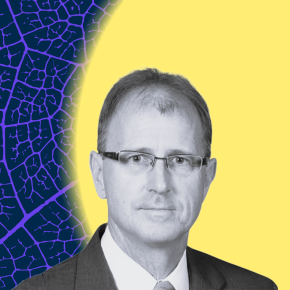CNRS Chemistry welcomes Daniel R. Talham as an Ambassador in Chemical Sciences
On June 7 2024, Daniel R. Talham, Professor in the department of Chemistry at the University of Florida, will start a series of lectures in several CNRS laboratories as the Ambassador in Chemical Sciences in France. Professor Talham’s research group plays with nanostructures, surfaces and interfaces and magnetism to discover new functional materials for information processing, energy storage, bioanalysis and sustainability. He tells us all about this realm of hybrid materials.
What drove you into materials chemistry and functional materials?
My first research experience as an undergraduate student in the late 1970’s was in a chemistry lab working on organic solids as conductors and superconductors. The lab was closely aligned with experimental and theoretical physics. While such collaborations are more common now, it was pretty unique in those days. For the rest of my career, I have always enjoyed the excitement of working with colleagues from other disciplines-- physicists, materials scientists and engineers. Materials chemistry has allowed me to stay in that environment. We use physics and materials applications as motivators for new chemical designs.
What future outcomes do you expect in the next 5 to 10 years for functional hybrid materials?
When talking about hybrid materials, electronics applications and information storage often come to mind. The promise is seen by the number of groups working on these problems. However, there are other prospects for hybrid materials that get less attention. One of these is wireless actuation. Causing motion with light as a stimulus, for example. Applications could be at the nanoscale, really small motors, or at macroscopic scales in conditions where electronics corrode. Hybrid materials, combining optoelectronics and motion, will play a role here.
Another exciting area is magnetic resonance imaging, but rather than imaging tissue, using MRI to image physiology. New agents are needed to realize these applications and I think hybrid systems, in this case mixed organic/inorganic nanoparticles, offer a solution.
As a CNRS ambassador of Chemical Sciences, what are you most looking forward to during your French conference tour?
The CNRS has a long history of welcoming international scientists. I was extremely fortunate in my early training to benefit from its programs. While a postdoc in England, I was given the opportunity to spend three months in Orsay, in the Laboratoire de physiques des solides, “Batiment 510”. I was in a chemistry group there, again a collaboration between chemists and physicists. I ultimately stayed an additional three months. It was my introduction to the French scientific community and the connections I made helped shape the direction of my career. I have participated in many collaborations with French groups, I have been able to send students here, and I have hosted French colleagues and students in Florida. I look forward to the trip to reconnect with old friends and, hopefully, make new acquaintances.
